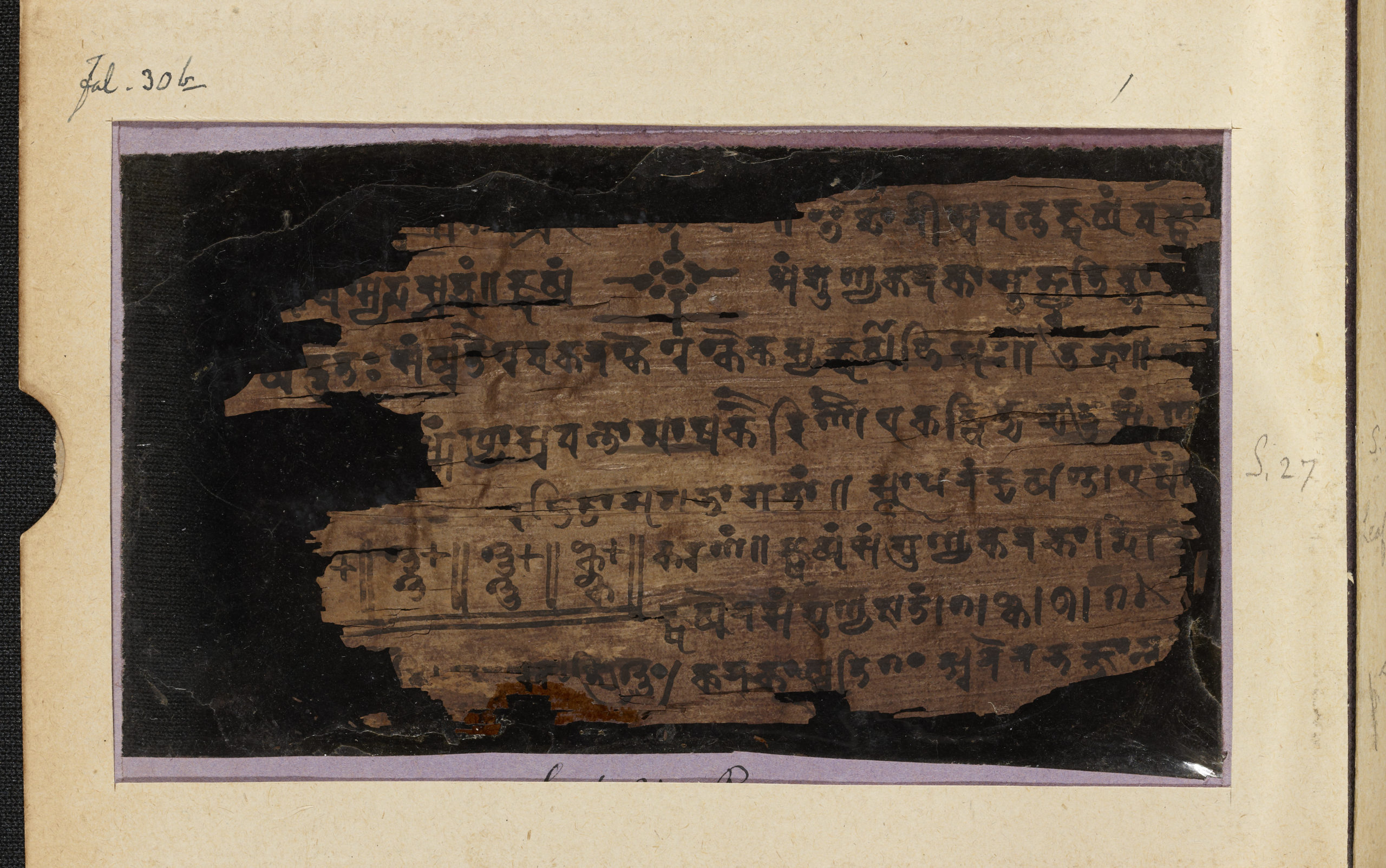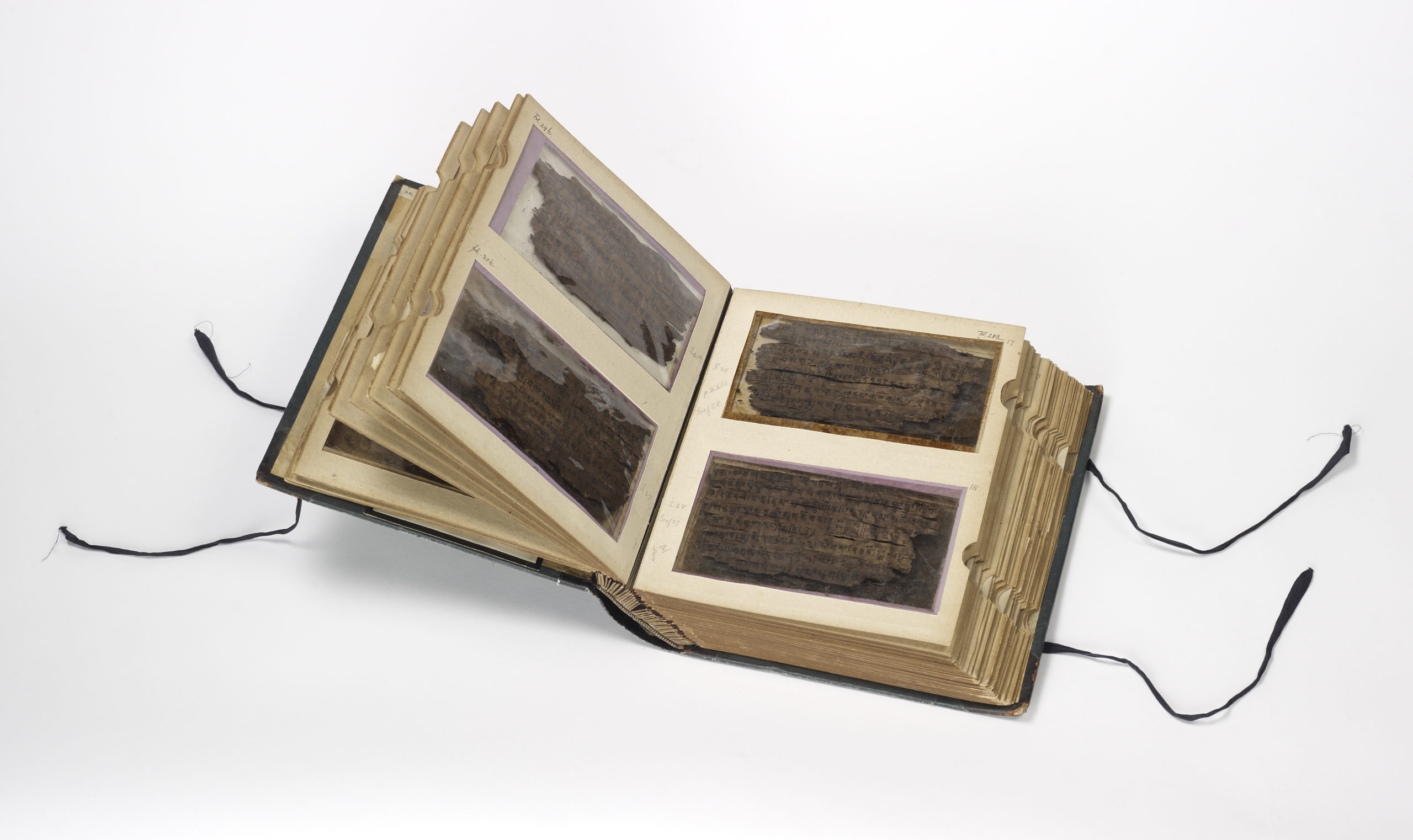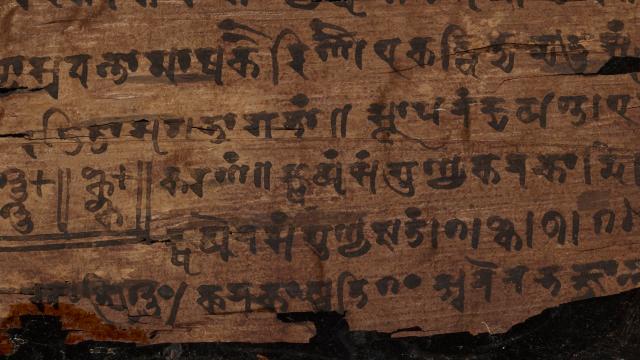The number zero is something we all take for granted, yet its conceptual origin has eluded archaeologists and historians. An updated analysis of an ancient Indian manuscript is shedding new light on this longstanding mystery, showing that the symbol that would eventually evolve into the number zero emerged at least 500 years earlier than previously thought.
In this close-up image, you can see the use of a dot as a placeholder in the bottom line. This dot evolved into the use of zero as a number in its own right. (Image: Bodleian Libraries, University of Oxford)
Carbon dating of the Bakhshali manuscript, a sole surviving copy of a mathematical text, has pushed back the time of origin to between 224 to 383 AD, rather than the 9th and 12th centuries as previous research had suggested. The Bakhshali manuscript is littered with a symbol for zero, as conveyed by a solid black dot, making it the oldest known example of the symbol that would later evolve into a number in its own right.
The document was discovered buried in a field by a local farmer in 1881 near the village of Bakhshali in what is now Pakistan. It was sent to the Bodleian Library at Oxford University in 1902, and it’s been there ever since. An early analysis of the text identified the language as being a Buddhist Hybrid Sanskrit; the manuscript contained hundreds of zero symbols and was likely used by merchants who needed a reference for their daily trading activities. But the precise age of the document remained elusive, which is why in early 2017, researchers from the University of Oxford’s Bodleian Libraries and the Oxford Radiocarbon Accelerator Unit collaborated on a project to finally carbon date the document.

Carbon dating shows the Bakhshali manuscript dates from 224-383 AD, making it one of the earliest known examples of the use of zero (written as a dot) a as a placeholder, that is, the use of zero to indicate orders of magnitude in a number system. (Image: Bodleian Libraries, University of Oxford)
Prior investigations into the age and origin of the Bakhshali script suggested it was written some time between the 8th and 12th centuries, but that analysis was based on the style of writing, the literary and mathematical content, and other factors. The new carbon dating shows why an origin date was so difficult to nail down; the manuscript consists of 70 brittle leaves of birch bark, composed of material from at least three different historical periods.
It’s worth pointing out that this analysis has yet to be peer-reviewed and published in a scientific journal. “While we’re referring to this as a research paper it hasn’t yet been submitted as a research paper to a journal/publication,” explained a Bodleian Libraries spokesperson to Gizmodo. “We are providing it so that writers can see the findings from the carbon dating research in more detail.”

The 70 leaves of birch bark that make up the Bakhshali manuscript are incredibly fragile and are stored in this specially designed book. Scholars are able to view both sides of the birch bark through the ‘windows’ of the book. (Image: Bodleian Libraries, University of Oxford)
The concept of zero seems intuitive, but that’s because we’re already familiar with it. There’s a big conceptual leap between saying “there are no apples on this tree” to saying “this tree has zero apples on it”. Historically, the concept of requiring a placeholder to denote “nothing” emerged in several different ancient cultures, including ancient Mayans and Babylonian societies, but the use of zero in the Bakhshali manuscript is significant for two reasons.
First, the black dot that appears in the Bakhshali text would later evolve into the hollowed-out circle that now symbolises the number zero. Second, it’s the only known example of a zero placeholder that would later be turned into a number in its own right. In an accompanying discussion of the research paper, Marcus du Sautoy, an Oxford University Professor of Mathematics, explained it like this:
The zero used in the Bakhshali manuscript is not yet a number in its own right. It is a place holder being used as part of another number written in the place number system. We write 101 to indicate 1 hundred, no tens and 1 unit. The zero is indicating the absence of 10s. This idea of needing a symbol to represent nothing as part of writing numbers in the place number system has a very ancient heritage. 5000 years ago, the Babylonians used a double wedge for nothing as part of the cuneiform symbols to write numbers on stone tablets. The Mayans were using a symbol of a shell to denote absence in their number system 2000 years ago.
So the black dot used in the Bakhshali text isn’t the first use of zero as a way to build larger numbers, but it is the seed from which the concept of zero emerged in its own right, says du Sautoy.
“Determining the date of the Bakhshali manuscript is of vital importance to the history of mathematics and the study of early South Asian culture and these surprising research results testify to the subcontinent’s rich and longstanding scientific tradition,” noted Richard Ovenden, a Bodley Librarian, in a statement.
Work on this manuscript is far from complete, says Ovenden, but now that scholars know its time of origin, they stand a better chance of reconstructing the original structure of the texts and making a more informed assessment of the different textual layers.
